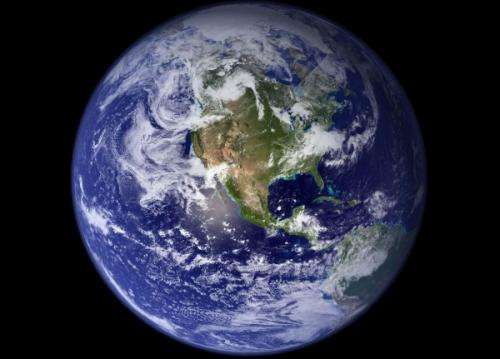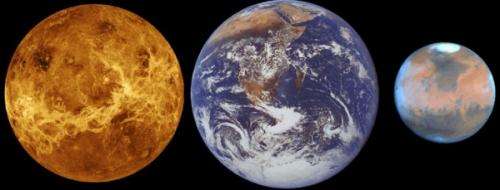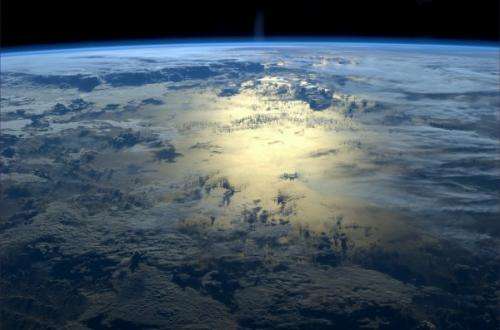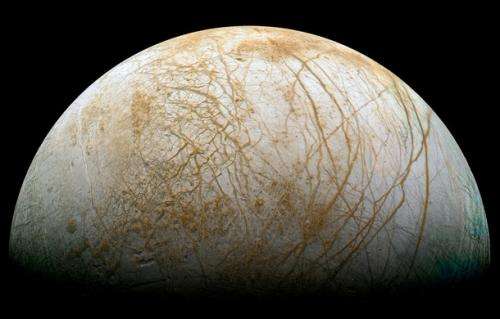When life went global

"An origin of life is not the same as an origin of a biosphere—that's an important distinction," says David Grinspoon, a planetary scientist and curator of astrobiology for the Denver Museum of Nature & Science.
To illustrate the concept Grinspoon offers a simple analogy. Say you're starting a camp fire. It's easy to get it to spark up, but you have to tend it first or it may just die out. But then the fire reaches a critical moment when it catches on and becomes self-sustaining. Now you can leave it alone, and go back to drinking beers.
Grinspoon wonders: Did life start out like little sparks that are vulnerable to extinction? And did it, once it transitioned to a global phenomenon, become like a self-sustaining flame?
False Start on Earth's Sisters?
Grinspoon's work focuses on the evolution of climate and atmosphere on Earth-like planets. At a recent conference themed Habitable Worlds Across Time and Space, held at the Space Telescope Science Institute in Baltimore, MD, he discussed the implications of this viewpoint for Earth's nearest neighbors: Venus and Mars.
The three rocky planets formed around the same time, some 4.5 billion years ago. Just like Earth, Venus and Mars may once have been watery worlds. Today they seem dry and barren, but several lines of evidence suggest they both had oceans in their early days.
"Everything we know about them points to an early environment that was hospitable for life," Grinspoon says in an interview with Astrobiology Magazine.
Somehow only Earth held onto its water, and eventually burst out with the self-sustaining fire of life.
"Maybe what's rare is not the formation of watery planets, but the persistence of habitable environments over cosmological timescales," he says.
By the end of his talk, titled "Venus and Mars as Failed Biospheres," Grinspoon raises an intriguing question. Is a biosphere necessary for the long-term survival of life?
The Turning Point on Earth
The oldest signs of life on Earth date to about 3.5 billion years ago. But when did our planet transition from having organisms to having a biosphere?

"It's hard to tell—it's something that hasn't been studied enough," Grinspoon says. "But my guess is that once life has some kind of global influence, then you're transitioning to a biosphere."
To him the shift had likely occurred by 2.3 billion years ago, or around the time photosynthetic microbes began churning out oxygen into Earth's oceans and atmosphere, affecting life's survival everywhere on the planet.
However, life's influence went way beyond its power to shape the Earth's atmosphere. According to recent studies, life has shaped everything from Earth's interior to the diversity of minerals on its surface. As Grinspoon puts it, "Life has got Earth in its clutches in this deep, and not always obvious way."
Birth of a Living World
"Can a planet, in a sense, become alive?" Grinspoon asks.
It's not the first time he puts the concept forward. In his 2003 book Lonely Planets, Grinspoon introduced the "Living World" hypothesis, a slight variant the well-known Gaia hypothesis.
In the 1970s, the chemist James Lovelock and the biologist Lynn Margulis developed the idea that our Earth may be like a living organism, a self-regulating entity that employs feedback loops to keep conditions just right for life. They christened the potentially living planet "Gaia," from the Greek for Mother Earth.
The idea has since been hotly debated, mostly pegged as more philosophical than scientific. Still, many researchers agree that the concept has helped Earth system science move forward, allowing us to realize that many of Earth's cycles—the water, nitrogen, and carbon cycles; plate tectonics; and the climate—are deeply interconnected, and is modulating and being modulated by life on Earth.
"Gaia may just be a nice metaphor," Grinpsoon says, "but I wonder if it may be fruitful to think of life as something that happens not just on a planet, but as something that happens to a planet."
"You cannot easily separate the living and the non-living parts of Earth," he adds. "Life has made Earth the way it is to a large extent. That's the general meaning of the Gaia hypothesis, and the Living Worlds hypothesis is simply extending the idea to other planets."

Finding Life's Elsewhere
"The idea of an origin of life separated from the birth of a living world has interesting implications for life elsewhere," Grinspoon writes in Lonely Planets.
"If self-regulating Gaia is responsible for Earth's life longevity, then we need to find other places where this kind of global organism has evolved, not merely places where the origin of life might once have occurred."
In other words, our search for life should then target places with active geological and meteorological cycles, the potential tell-tales of a vibrant biosphere.
We've now found nearly 2,000 planets orbiting distant stars, and counting. While these worlds may be too far for us to find any direct evidence for life in the near future, researchers are becoming increasingly proficient at making out the composition of their atmosphere. That ability could perhaps one day allow us to distinguish between "failed biospheres" and potentially living worlds.
In the meantime, a Living World perspective may yield useful insights as we target our search for life closer to home, in our own solar system. Jupiter's icy moon, Europa, seems to have a young and active surface, while Saturn's moon, Titan, is meteorologically well-alive with methane raining down and filling rivers and lakes.

Even our closest neighbor, Venus, long viewed as a hellish world with its extreme heat, crushing pressure, and clouds of sulfuric acid, could potentially host some kind of life, if vigorous cycles are any indicators of a healthy biosphere, as Grinspoon argued in his 1997 book, Venus Revealed.
For Mars it would be a different story, with its stale atmosphere of carbon dioxide and its rusty, quiet surface.
"From a living worlds perspective, the new wave of interest in life on Mars is highly questionable," Grinspoon wrote in Lonely Planets.
But even if Mars seems dead now, it may not be the end of it for the Red Planet. By 2030, the mission "Mars One" will aim to establish the first human settlement. In the end, the "fire" which started on Earth 3.5 billion years ago could soon leap and catch on elsewhere.
Source: Astrobio.net
This story is republished courtesy of NASA's Astrobiology Magazine. Explore the Earth and beyond at www.astrobio.net .





















